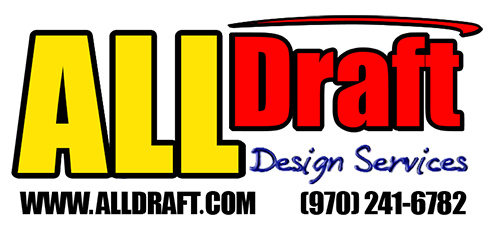Barndominiums offer unparalleled flexibility when it comes to designing spaces that suit your lifestyle and work needs. Whether you’re a DIY enthusiast needing a fully equipped workshop or a remote worker seeking a productive home office, your barndominium can be customized to house both functionality and comfort.
Creating the perfect workshop or home office involves thoughtful planning, attention to detail, and the use of efficient design strategies. Here’s how to transform your barndominium into the ideal workspace.
1. Define Your Needs and Goals
Before diving into design specifics, outline the primary purpose of your space.
- For a Workshop: Identify the type of projects you’ll work on. Do you need space for woodworking, metalworking, automotive repairs, or crafts? Consider the equipment, tools, and storage solutions required.
- For a Home Office: Determine how much space you need for your desk, chair, computer setup, and additional features like bookshelves, filing cabinets, or meeting areas.
Pro Tip: Think about future needs to ensure the space remains functional as your projects or work evolve.
2. Choose the Right Location in the Barndominium
The placement of your workshop or home office is crucial for functionality and comfort.
- Workshop: Position the workshop away from living areas to minimize noise and dust intrusion. Opt for spaces with easy access to exterior doors for moving materials and equipment.
- Home Office: Choose a quiet, well-lit area with minimal distractions. If possible, locate the office near windows to benefit from natural light.
Pro Tip: Consider soundproofing walls or ceilings if the workspace might create noise disturbances.
3. Plan an Efficient Layout
The layout of your workspace should prioritize workflow and ease of use.
- Workshop Layout:
- Create zones for different activities (e.g., cutting, assembly, storage).
- Position heavy equipment near power outlets.
- Include ample counter or bench space for working on projects.
- Home Office Layout:
- Arrange furniture ergonomically to reduce strain during long work hours.
- Place your desk near windows but avoid glare on screens.
- Leave room for personal touches like art or plants to make the space inviting.
Pro Tip: Use modular furniture for both workshops and offices to maximize adaptability and space efficiency.
4. Focus on Lighting
Proper lighting is essential for productivity and safety.
- Workshop: Combine bright overhead lights with task lighting for specific areas like workbenches or machinery. LED lights are a great choice for energy efficiency and brightness.
- Home Office: Use a combination of natural light, desk lamps, and warm ambient lighting to create a comfortable, focused environment.
Pro Tip: Install dimmer switches or smart lighting to adjust brightness based on tasks or time of day.
5. Incorporate Ample Storage Solutions
Effective storage keeps your workspace organized and clutter-free.
- Workshop Storage:
- Install pegboards for hanging tools.
- Use wall-mounted shelves or cabinets for materials.
- Add rolling carts for easy access to frequently used items.
- Home Office Storage:
- Opt for built-in shelving to save space.
- Use filing cabinets or bins to keep paperwork organized.
- Consider multi-functional furniture, like desks with storage compartments.
Pro Tip: Label storage areas to quickly locate items and maintain organization.
6. Ensure Proper Ventilation and Climate Control
Maintaining a comfortable and healthy workspace is essential.
- Workshop:
- Install a ventilation system to remove dust, fumes, or odors.
- Use ceiling fans, exhaust fans, or HVAC systems for climate control.
- Home Office:
- Add an air purifier to improve indoor air quality.
- Use a smart thermostat to maintain an ideal temperature.
Pro Tip: For workshops, ensure proper insulation to keep temperatures stable and energy costs low.
7. Integrate Technology and Power Needs
Modern workshops and offices require adequate power and technology integration.
- Workshop:
- Install multiple power outlets, including high-voltage options for heavy equipment.
- Use surge protectors to safeguard tools and machinery.
- Home Office:
- Include plenty of outlets for charging devices.
- Set up high-speed internet with reliable Wi-Fi or Ethernet connections.
Pro Tip: Use cable management solutions to keep cords organized and prevent tripping hazards.
8. Design for Comfort and Aesthetics
Your workspace should be functional, but that doesn’t mean you have to sacrifice comfort or style.
- Workshop: Add anti-fatigue mats, ergonomic stools, and good ventilation to improve comfort during long work sessions.
- Home Office: Choose a chair with proper lumbar support and decorate the space with calming colors, art, or greenery.
Pro Tip: Use durable materials for workshop surfaces and prioritize low-maintenance finishes for both spaces.
9. Add Personal Touches
Make your workspace uniquely yours by incorporating elements that inspire creativity and productivity.
- Workshop: Display finished projects or hang motivational posters.
- Home Office: Add family photos, artwork, or a small bulletin board for to-do lists and ideas.
Pro Tip: A personalized workspace can boost morale and make the area feel more inviting.
10. Budget and Plan for Growth
Finally, ensure your workspace fits within your budget and allows room for future expansion.
- Workshop: Plan for additional equipment or storage needs as your projects evolve.
- Home Office: Include space for potential upgrades like dual monitors, larger desks, or more shelving.
Pro Tip: Invest in quality essentials upfront to avoid frequent replacements or upgrades.
Conclusion
Designing the perfect workshop or home office in your barndominium is all about striking a balance between functionality and comfort. Whether you’re building a productive home office or a versatile workshop, thoughtful planning can transform your space into a hub of creativity and efficiency.
At Alldraft Design Services, we specialize in creating customized barndominium designs tailored to your needs. Contact us today to bring your dream workshop or home office to life!

